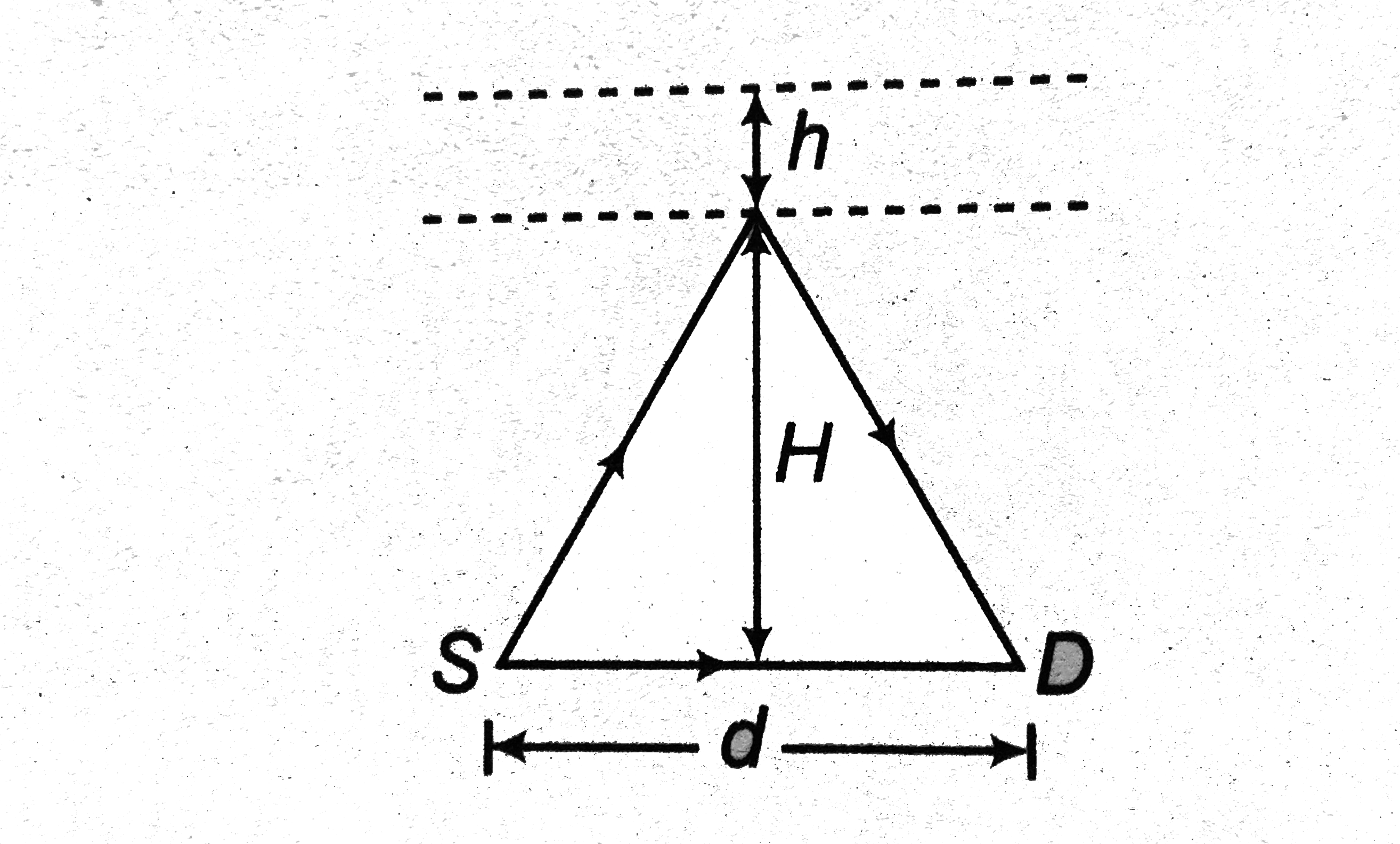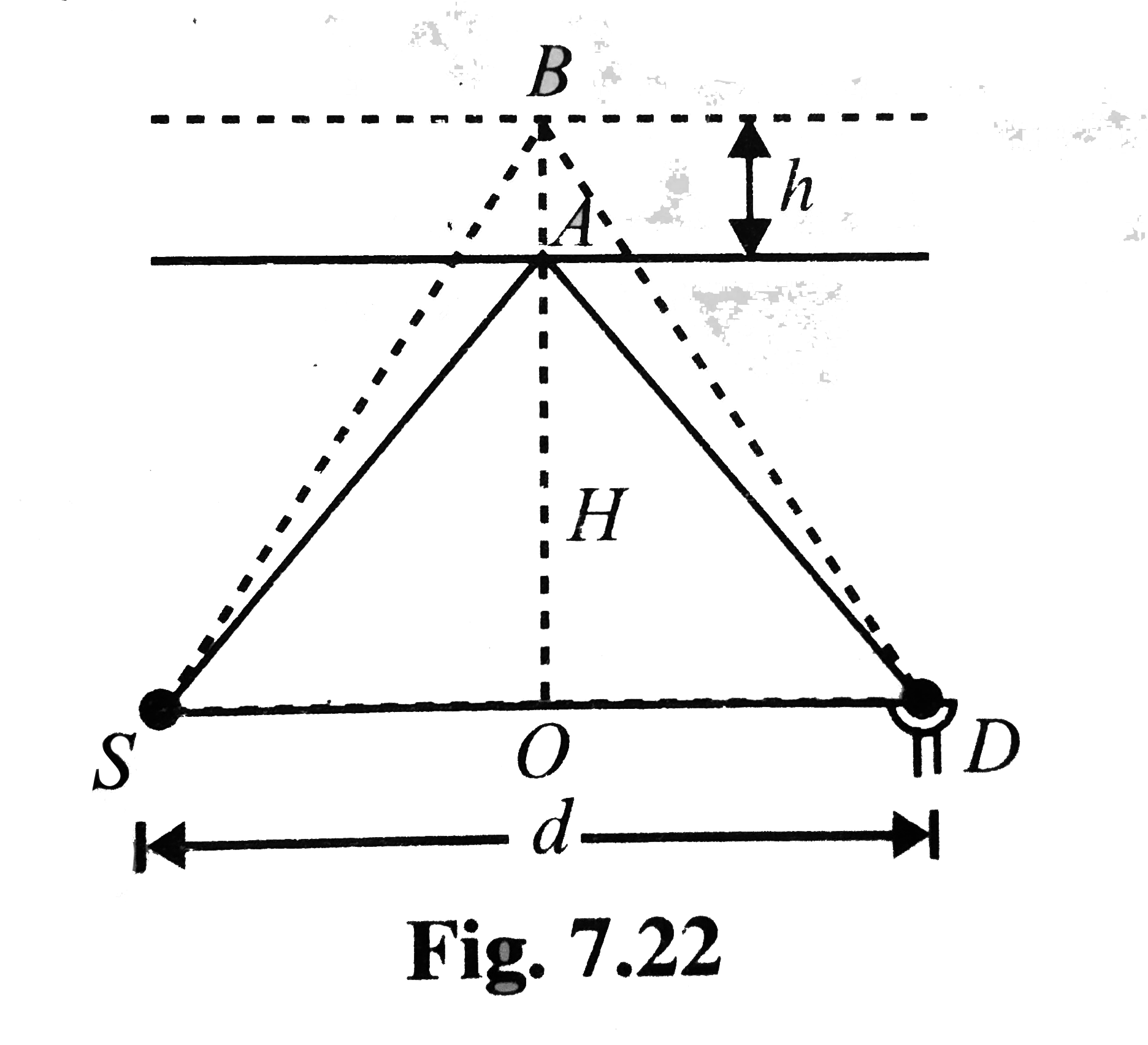A source S and a detector D high frequency waves are a distance d apart on the ground. The direct wave from S is found to be in phase at D with the wave from S that is reflected from horizontal layer at an altitude H. The incident and reflected rayes make the same angle with the reflecting layer. When the layer rises a distance h, no signal is detected at D . Negle ct absorption in the atmosphere and find the relation between d,h, H and the wavelength λ of the waves.

The correct Answer is:A, B, D
2√H2+d2/4−d=nλ ..(i)
Now, 2√(H+h)2+d2/4−d=nλ+λ2 ..(ii)
Solving these two equations, we get
λ=2√4(H+h)2+d2−2√4H2+d2
Topper's Solved these Questions
- SOUND WAVESBOOK - DC PANDEYCHAPTER - SOUND WAVESEXERCISE - Exercise 19.1
4 Videos
- SOUND WAVESBOOK - DC PANDEYCHAPTER - SOUND WAVESEXERCISE - Exercise 19.2
4 Videos
- SOUND WAVESBOOK - DC PANDEYCHAPTER - SOUND WAVESEXERCISE - Comprehension Based Questions
2 Videos
- SOLVD PAPERS 2017 NEET, AIIMS & JIPMERBOOK - DC PANDEYCHAPTER - SOLVD PAPERS 2017 NEET, AIIMS & JIPMEREXERCISE - Solved paper 2018(JIPMER)
38 Videos
- SUPERPOSITION OF WAVESBOOK - DC PANDEYCHAPTER - SUPERPOSITION OF WAVESEXERCISE - Level 2 Subjective
8 Videos
Similar Questions
A source and a detector D of high frequency waves are a distance d apart on the ground . Maximum signal is received at D when the reflecting layer is at a height H. When the layer rises a distance h , no signals is detected at D . Neglecting absorption in the atmosphere , find the relation between d,h,H, and the wavelength λ of the waves .

View SolutionA light wave is reflected from a mirror. The incident and reflected waves superimpose to form stationary waves. But no nodes and antinodes are seen. Why?
View Solution
Knowledge Check
The reflected waves from on ionsphere are ………..
Aground wavesBsky wavesCspace wavesDvery high frequency wavesA sound wave makes an angle 30∘ with the reflecting surface. The angle of reflection is _______.
A30∘B60∘C90∘D120∘A sound wave makes an angle 30∘ with the reflecting surface. The angle of reflection is _______.
A30∘B60∘C90∘D120∘
The change in phase if a wave is reflected from a rigid surface is
View SolutionRadio waves are reflected from which layer of atmosphere ?
View SolutionWhen a wave is reflected at a rarer surface,the change in phase is
View SolutionA wave is reflected from a rigid support. The change in phase on reflection will be
View SolutionIn a single reflection from the ionosphere, the sky waves cover a distance on ground not more than
View Solution
